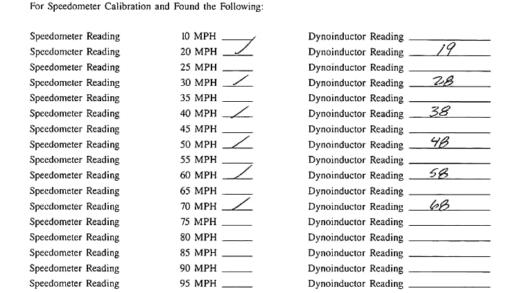Raccoons are intelligent creatures known for their adaptability in urban environments. They exhibit clever behaviors, including problem-solving and social interactions. While they can be considered pests due to their opportunistic nature, understanding their behaviors and needs can foster coexistence. Tips for living alongside raccoons include securing food sources and knowing how to handle encounters with them.
Raccoon Intelligence: What Makes Them Stand Out?
Raccoon intelligence is fascinating and sets them apart from many other animals. These creatures have demonstrated remarkable problem-solving abilities and adaptability. They can open containers, unlock latches, and even navigate complex environments with ease. Their paws, which are incredibly dexterous, allow them to manipulate objects in ways that many animals cannot. This intelligence is not just a party trick; it’s essential for their survival, especially in urban areas.
Research shows that raccoons possess a high level of curiosity, which drives them to explore new environments. This inquisitive nature is often mistaken for mischief. For instance, they are known to rummage through trash cans, but this behavior is a testament to their intelligence as they seek out food sources.
Moreover, studies have indicated that raccoons can remember the solutions to tasks for at least three years. This long-term memory is crucial for their survival, allowing them to recall where they found food or how to escape a tricky situation.
In summary, raccoons stand out due to their intelligence and adaptability. Their problem-solving skills, dexterous paws, and strong memory make them unique among wildlife.
Urban Life: How Raccoons Adapt to City Living
Raccoons have shown impressive adaptability in urban environments. Their ability to thrive in cities is a remarkable survival tactic. As urban areas expand, raccoons have found ways to exploit the resources available in these human-dominated landscapes.
Some key adaptations include:
- Food Sources: Raccoons have adapted their diet to include human food scraps. They are often seen scavenging in garbage bins, where they find a variety of edible items.
- Habitat Choices: These animals are excellent climbers and often make their homes in attics, basements, or even under decks, which provide safety from predators.
- Social Behavior: In urban settings, raccoons may form larger social groups, which can enhance their foraging efficiency and provide protection against threats.
This adaptability has led to a significant increase in raccoon populations in cities. Their cleverness allows them to navigate human environments, making the most of what urban life has to offer.
Clever Behaviors: Common Raccoon Actions That Show Intelligence
The intelligence of raccoons is evident in their clever behaviors. Observing these actions can provide insight into their cognitive abilities. Here are some common behaviors that showcase their intelligence:
- Problem Solving: Raccoons are known for their ability to solve puzzles. They can figure out how to open complex locks or lids to access food.
- Tool Use: While not as common as some primates, raccoons have been observed using objects as tools to aid in their foraging.
- Learning from Experience: Raccoons learn from their interactions with the environment. For instance, if a raccoon finds food in a particular spot, it is likely to return there in the future.
These behaviors illustrate that raccoons are not just cute bandits; they are intelligent creatures capable of adapting their actions based on their experiences. Understanding these behaviors can enhance our appreciation for these fascinating animals.
Raccoons as Pests: Why Some People Consider Them Nuisances
Raccoons are often labeled as pests due to their opportunistic behavior and adaptability to urban life. Their intelligence can lead them to cause problems for homeowners and businesses alike. Here are a few reasons why some people find raccoons to be nuisances:
- Property Damage: Raccoons can cause significant damage when they enter attics or basements in search of food or shelter. They have strong claws and teeth, enabling them to tear apart insulation, ductwork, and even roofs.
- Food Theft: These clever creatures often raid garbage cans, compost bins, and pet food bowls, leading to messy yards and potentially dangerous situations if they feel threatened.
- Health Risks: Raccoons can carry diseases such as rabies, raccoon roundworm, and leptospirosis, posing health risks to both pets and humans. Their droppings can contaminate food sources and water supplies.
While raccoons play an important role in the ecosystem, their interactions with humans can lead to conflicts. Understanding these nuisances can help communities find ways to coexist more peacefully with raccoons.
Raccoon Diet: What Do They Eat in Urban Areas?
The raccoon diet is incredibly diverse, especially in urban environments. These animals are omnivorous and opportunistic feeders, meaning they will eat whatever is available. Their diet can include:
- Human Food: Raccoons often scavenge through trash bins for leftovers, which can include fruits, vegetables, and even pizza.
- Pet Food: Many raccoons take advantage of pet food left outside, making them regular visitors in suburban neighborhoods.
- Natural Foods: In addition to human food, raccoons consume insects, small mammals, fruits, and nuts when they are available.
Understanding what raccoons eat in urban areas can help residents take preventive measures to avoid attracting these clever creatures. Proper waste management and secured food sources can deter them from rummaging through yards.
Paws of Precision: How Raccoons Manipulate Objects
Raccoons are known for their dexterous paws, which allow them to manipulate objects with impressive precision. This unique adaptation plays a crucial role in their survival and showcases their intelligence. Here are some ways raccoons use their paws:
- Opening Containers: Raccoons have been observed opening jars, lids, and even doors. Their ability to grasp and turn objects is remarkable.
- Tool Use: Occasionally, raccoons will use sticks or stones to help them access food, demonstrating a level of problem-solving typically associated with higher mammals.
- Exploration: Their paws are sensitive and allow raccoons to explore their environment thoroughly, feeling for food or safe places to hide.
This manipulation ability is not just fascinating; it’s a vital part of how raccoons adapt to their urban surroundings and find resources necessary for survival.
Social Behavior: Interesting Facts About Raccoon Interactions
Raccoon social behavior is surprisingly complex and intriguing. These creatures are not solitary; they often engage in social interactions that enhance their survival. Raccoons are known to form social groups, particularly in urban areas, which aids in foraging and protection against predators.
Here are some notable aspects of raccoon social interactions:
- Communication: Raccoons communicate through a variety of vocalizations, body language, and even scent markings. They can express different emotions and intentions through these methods.
- Play Behavior: Young raccoons often engage in play, which is crucial for developing their skills and social bonds. This play can involve chasing, wrestling, and exploring together.
- Cooperation: In some cases, raccoons work together to access food sources. This cooperative behavior can lead to more efficient foraging and increased food availability for the group.
Understanding raccoon social behavior provides insight into their adaptability and intelligence. These interactions are vital for their survival, especially in urban environments where resources can be limited.
Living Peacefully with Raccoons
Coexisting with raccoons can be challenging but manageable with the right strategies. Here are some tips for peaceful living alongside these intelligent creatures:
- Secure Garbage: Ensure that trash cans are tightly closed and stored in a place that raccoons cannot access. Consider using raccoon-proof containers.
- Remove Food Sources: Avoid leaving pet food outside, and clean up any fallen fruits or seeds that might attract raccoons to your yard.
- Block Entry Points: Inspect your home for any potential entry points, such as gaps in roofs or basements, and seal them to prevent raccoons from nesting in your space.
By implementing these measures, residents can minimize conflicts with raccoons and appreciate their role in the ecosystem.
What to Do When You Encounter a Raccoon
Encountering a raccoon can be surprising, but it’s essential to know how to react. Here are some steps to follow:
- Stay Calm: If you see a raccoon, remain calm and avoid sudden movements. Most raccoons are more scared of you than you are of them.
- Do Not Approach: Keep a safe distance and do not attempt to touch or feed the raccoon. Approaching can provoke a defensive response.
- Observe from Afar: Take a moment to watch the raccoon from a distance. They may simply be passing through or searching for food.
In case of aggressive behavior, it’s best to retreat slowly and leave the area. Understanding how to handle encounters can ensure safety for both humans and raccoons.





Comments are closed.